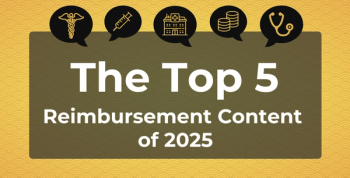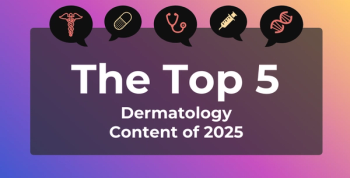
Hemophilia A Gene Therapy Superior to Standard of Care in Phase 3 Trial
The gene therapy giroctocogene fitelparvovec demonstrated superiority compared with the standard of care, routine prophylaxis, in hemophilia A treatment.
Giroctocogene fitelparvovec demonstrated superiority compared with routine prophylaxis in hemophilia A treatment, according to topline data from the phase 3 AFFINE study (
Giroctocogene fitelparvovec is an investigational 1-time
Routine factor VIII (FVIII) prophylaxis is considered the standard therapy for patients with severe hemophilia A or B, and it is recommended that prophylactic therapy is instituted early.2 The benefit of giroctocogene fitelparvovec is that it is a 1-time therapy. A single infusion could reduce the burden of routine prophylaxis and protect against bleeding for an extended time.
“For people living with hemophilia A, the physical and emotional impact of needing to prevent and treat bleeding episodes through frequent IV infusions or injections cannot be underestimated,” said Andrew Leavitt MD, AFFINE lead investigator and director of the Adult Hemophilia Treatment Center at the University of California, San Francisco.1
The AFFINE trial is an open-label, multicenter, single-arm study that evaluated the safety and efficacy of a single infusion (3e13 vg/kg dose) of giroctocogene fitelparvovec in 75 adult male patients with moderately severe to severe hemophilia A. All of the participants will be evaluated over 5 years for up to 15 years after infusion for long-term follow-up.
As hemophilia is a genetic disorder that’s passed down on the X chromosome, it is more common in males than females. Women with a variant FVIII gene are only carriers and most have no signs or symptoms of hemophilia.3
The study evaluated total annualized bleeding rate from week 12 to at least 15 months of follow-up after the infusion. The mean annualized bleeding rate decreased from 4.73 in the preinfusion period to 1.24 in the postinfusion period (P = .0040).
At 15 months after the infusion, 84% of participants maintained FVIII activity greater than 5% (P =.0086). There was a statistically significant 98.3% reduction in the participants’ average treated annualized bleeding rate, from 4.08 before the infusion to 0.07 after the infusion (P <.0001).
Only 1 patient returned to prophylaxis after they received the infusion.
The therapy was generally well tolerated. Fifteen (20%) patients reported serious adverse events, including 13 events in 10 patients that were deemed to be related to the treatment. Although half (49.3%) of patients experienced transient elevated FVIII levels of 150% or more, this had no impact on safety and efficacy.
“I’m excited by the strength of these positive results from the AFFINE trial that show giroctocogene fitelparvovec was generally well tolerated and demonstrate the transformative potential of this gene therapy candidate to provide superior bleed protection compared with routine FVIII prophylaxis, while helping relieve the treatment burden for people living with hemophilia A,” Leavitt said.
Analyses of the full phase 3 data are ongoing and will be presented at upcoming medical meetings. Giroctocogene fitelparvovec has received fast track, regenerative medicine advanced therapy, and orphan drug designations from the FDA.
“We are very pleased with these positive results from the phase 3 AFFINE study demonstrating the safety and efficacy of our 1-time gene therapy candidate for people with hemophilia A,” said James Rusnak, MD, PhD, senior vice president, chief development officer, Internal Medicine and Infectious Diseases, Research and Development, Pfizer. “We look forward to advancing this latest innovation to help address the medical and treatment burden associated with frequent and time-consuming [intravenous] infusions or injections…”
References
1. Pfizer announces positive topline results from phase 3 study of hemophilia A gene therapy candidate. Press release. Pfizer. July 24, 2024. Accessed July 25, 2024.
2. National Bleeding Disorders Foundation. MASAC document 267 - MASAC recommendation concerning prophylaxis for hemophilia A and B with and without inhibitors. Revised April 27, 2022. Accessed July 25, 2024.
3. Mayo Clinic. Hemophilia. August 29, 2023. Accessed July 25, 2024.
Newsletter
Stay ahead of policy, cost, and value—subscribe to AJMC for expert insights at the intersection of clinical care and health economics.








